Prevent Accidental Deletion of Blob Data in Azure Storage Account
Question
SIMULATION -
Overview -
The following section of the exam is a lab. In this section, you will perform a set of tasks in a live environment. While most functionality will be available to you as it would be in a live environment, some functionality (e.g., copy and paste, ability to navigate to external websites) will not be possible by design.
Scoring is based on the outcome of performing the tasks stated in the lab. In other words, it doesn't matter how you accomplish the task, if you successfully perform it, you will earn credit for that task.
Labs are not timed separately, and this exam may have more than one lab that you must complete. You can use as much time as you would like to complete each lab. But, you should manage your time appropriately to ensure that you are able to complete the lab(s) and all other sections of the exam in the time provided.
Please note that once you submit your work by clicking the Next button within a lab, you will NOT be able to return to the lab.
To start the lab -
You may start the lab by clicking the Next button.
You plan to prevent users from accidentally deleting blob data from Azure.
You need to ensure that administrators can recover any blob data that is deleted accidentally from the storagelod8095859 storage account for 14 days after the deletion occurred.
What should you do from the Azure portal?
Explanations
See explanation below.
Task A: Create a Recovery Services vault (if a vault already exists skip this task, go to Task B below)
A1. From Azure Portal, On the Hub menu, click All services and in the list of resources, type Recovery Services and click Recovery Services vaults.

If there are recovery services vaults in the subscription, the vaults are listed.
A2. On the Recovery Services vaults menu, click Add.

A3. The Recovery Services vault blade opens, prompting you to provide a Name, Subscription, Resource group, and Location
Task B. Create a backup goal -
B1. On the Recovery Services vault blade (for the vault you just created), in the Getting Started section, click Backup, then on the Getting Started with Backup blade, select Backup goal.
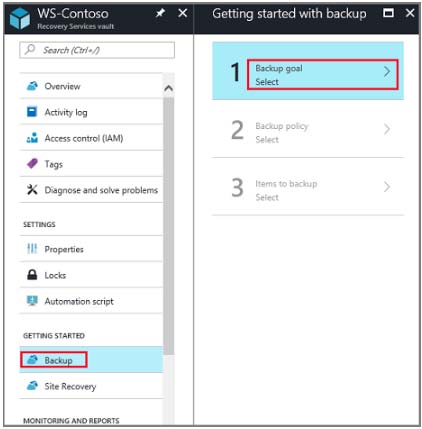
The Backup Goal blade opens. If the Recovery Services vault has been previously configured, then the Backup Goal blades opens when you click Backup on the
Recovery Services vault blade.
B2. From the Where is your workload running? drop-down menu, select Azure.
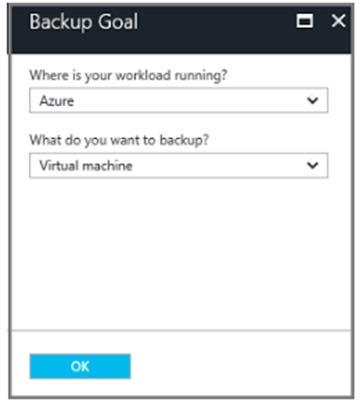
B3. From the What do you want to backup? menu, select Blob Storage, and click OK.
B4. Finish the Wizard.
Task C. create a backup schedule
C1. Open the Microsoft Azure Backup agent. You can find it by searching your machine for Microsoft Azure Backup.
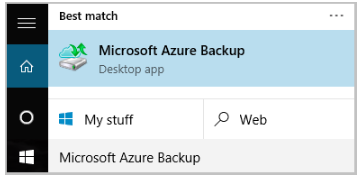
C2. In the Backup agent's Actions pane, click Schedule Backup to launch the Schedule Backup Wizard.
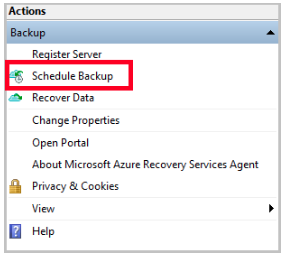
C3. On the Getting started page of the Schedule Backup Wizard, click Next.
C4. On the Select Items to Backup page, click Add Items.
The Select Items dialog opens.
C5. Select Blob Storage you want to protect, and then click OK.
C6.In the Select Items to Backup page, click Next.
On the Specify Backup Schedule page, specify Schedule a backup every day, and click Next.
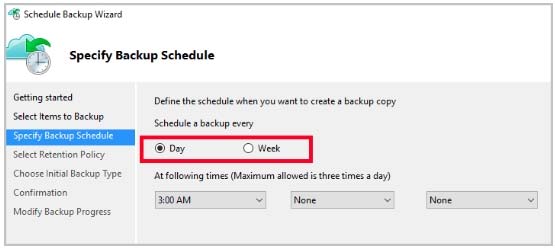
C7. On the Select Retention Policy page, set it to 14 days, and click Next.

C8. Finish the Wizard.
https://docs.microsoft.com/en-us/azure/backup/backup-configure-vaultTo prevent accidental deletion of blob data from Azure and to enable administrators to recover deleted data, you can use Azure Blob storage's soft delete feature. Soft delete allows you to retain deleted data for a specified period of time, during which it can be restored if needed.
To enable soft delete for a storage account, follow these steps:
- Sign in to the Azure portal.
- Navigate to the storage account that you want to enable soft delete for.
- Click on the "Data protection" tab on the left-hand menu.
- Under "Soft delete", toggle the switch to "Enabled".
- Set the "Retention period" to 14 days or any desired duration.
- Click "Save" to save the changes.
Once soft delete is enabled, any deleted blob data will be retained for the specified retention period, and can be restored if needed. To restore deleted data, follow these steps:
- Navigate to the storage account that the deleted data was stored in.
- Click on the "Containers" tab on the left-hand menu.
- Select the container that the deleted data was stored in.
- Click on the "Deleted blobs" tab.
- Find the deleted blob that you want to restore and select it.
- Click on the "Restore" button and confirm the action.
- The blob data will be restored to its original location.
Note that soft delete is not enabled by default, and must be enabled for each storage account that requires it. Additionally, soft delete only applies to blob data, and not to other types of data stored in Azure.
